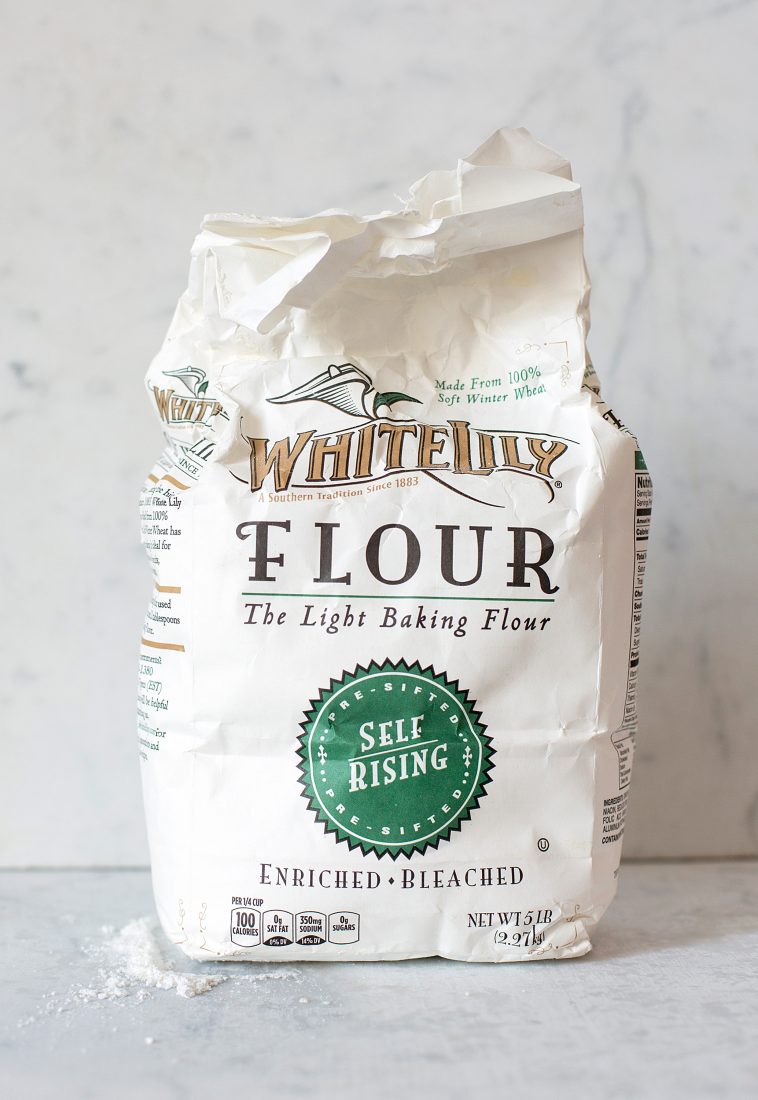White Lily is a go-to brand below the Mason-Dixon line, like Cheerwine or Duke’s Mayonnaise. More akin to cake flour than the competition, it gets its famous lightness first from the source—the soft red winter wheat from which it is made. That wheat is low in protein, which means softer, lighter baked goods. It is also bleached with chlorine gas, which weakens existing proteins. Southern cooks use it to make the sorts of tender biscuits and pastries that previous generations shaped from other, locally milled flours.
And while some say the most famous biscuit flour in the country has changed since the J. M. Smucker Company closed the plant in Knoxville, Tennessee, seven years ago, and began milling it exclusively in the heartland, the wheat has always come primarily from Indiana, Michigan, and Ohio. If anything about the flour has actually changed over the past several years, it might be that the shorter trip from field to mill has made it fresher.
We asked a half-dozen chefs and bakers why White Lily is still their favorite flour.
“White Lily and the South go hand-in-hand, like chicken and dumplings or biscuits and gravy. Its low protein content gives it that fluffy quality that is desirable in those staples.”
—Katie Bennett, head baker, Blackberry Farm, Walland, Tennessee
“I use it for piecrusts and biscuits. It’s sifted more than other flours and milled from soft red winter wheat, which is lower in protein and gluten. So it’s a finer, lighter flour that results in lighter and flakier biscuits and crusts.”
—Alex Harrell, Angeline, New Orleans
“It’s bleached, which does not only mean that it’s artificially turned white. The bleaching process—which does not involve actual bleach—helps make a fine, crumbly biscuit.”
—Edward Lee, 610 Magnolia, MilkWood, and Succotash, Louisville, Kentucky, and National Harbor, Maryland
“Southerners historically used these sorts of soft wheat flours, grown in the winter as it was too hot to grow here in the summer. Southern soft wheat flours were considered inferior by the hearty-wheat growers to the north, but they were actually a boon to bakers with hot ovens and a desire for quick-cooked breads biscuits, yeast rolls, pies, and holiday cakes. Lower in gluten, they make lighter baked goods and require less liquid. Flour types have changed, but it still mimics the original low-gluten, or low-protein, flours. I absolutely use it, particularly the self-rising.”
—Nathalie Dupree, cookbook author, Charleston, South Carolina
“It is my base all-purpose flour. I reach for it like salt. It really does bring different qualities to each preparation. For example, the quality of a roux made with White Lily is exceptional. The final product is more velvety, especially with a dark roux. One thing that often happens with a dark roux is that it becomes looser as it cooks. Not so with White Lily. Mixing our housemade baking powder into all-purpose flour gives us fried chicken crust with a light, airy crunch, especially with a buttermilk and egg dip. With biscuits, its softness and hydration give us an improved crust and a softer interior.”
—Linton Hopkins, Restaurant Eugene and Holeman & Finch, Atlanta, Georgia
“It makes a great dredge for fried seafood, because it makes a very light crust that doesn’t interfere with the flavor. We use it to make our fried oysters and our fried fish sandwich.”
—Justin Burdett, Local Provisions, Asheville, North Carolina
“White Lily makes biscuits rise higher, hands down. We’ve tested it. And they melt in your mouth. It’s also a soft, delicate flour, which makes them down pillow–like.”
—Carrie Morey, Callie’s Charleston Biscuits, Charleston, South Carolina
How about you? What’s your go-to flour for biscuits, pie crusts, and cakes?








